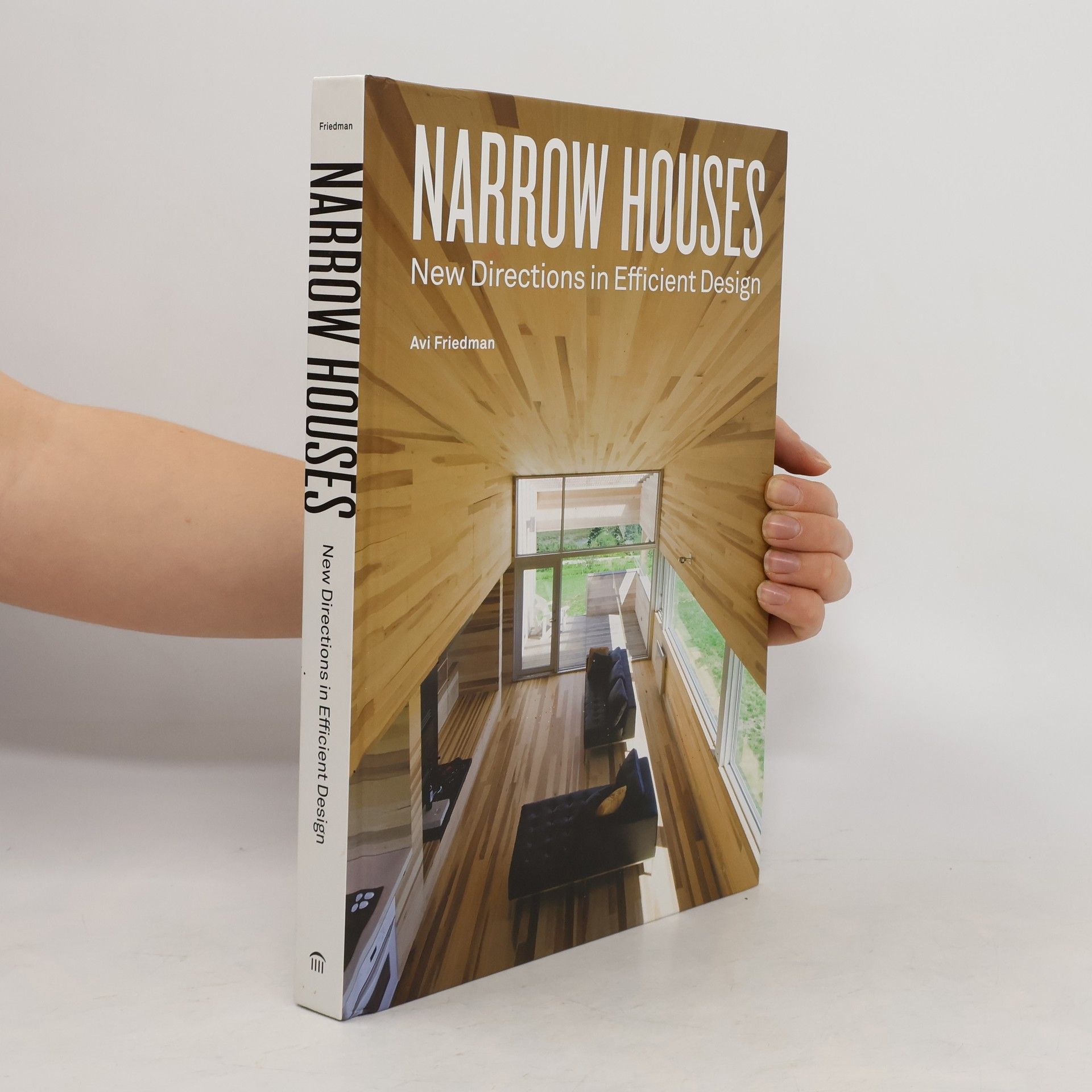New challenges on a global scale have forced a rethinking about the way homes and communities are designed. Future Homes provides an engaging and in-depth analysis of possible solutions.
Avi Friedman Knihy






Since the beginning of the housing boom of the 1950s, the size of the average North American house has steadily grown while the size of the average family has decreased. Today, a growing number of homebuyers seeking smaller, more efficient residential designs are rediscovering a centuries old housing prototype: the narrow house. Measuring twenty-five-feet wide or less, these "infill" or "skinny" houses, as they are often called, are on the rise in cities and suburbs around the world. The benefits of building small and narrow are numerous: greater land-use efficiency, less building material, fewer infrastructure costs, lower utility bills, and flexible layouts. This building type creates environmentally sensible houses that allow homeowners to live within their means. Narrow Houses presents a thorough overview of the practical considerations of designing a narrow-front home, including siting, floor arrangements, footprint, and interior and exterior finishing. The book documents twenty-eight innovative examples of narrow houses from around the world designed by today's foremost architects. Project data including floor plans and extensive interior and exterior photography demonstrate the inherent flexibility of this housing model and the many possibilities for adapting these homes to the constraints of site, climate, budget, family size, and other needs.
Sustainable Lessons from People-Friendly Places
- 240 stránek
- 9 hodin čtení
Focusing on sustainable urban design, this book explores essential principles that blend architecture with natural features and public spaces. It emphasizes the transition to active mobility, highlighting the importance of prioritizing citizen well-being in urban planning. Readers will gain insights into creating vibrant, functional cities that foster community and sustainability.
Designing Innovative Sustainable Neighborhoods
- 238 stránek
- 9 hodin čtení
Focusing on innovative and sustainable neighborhood design, this book presents key principles essential for residential planning. It serves as a valuable resource for students and professionals in urban design, planning, and architecture, particularly those engaged in sustainable residential development.
Fundamentals of Sustainable Urban Design
- 340 stránek
- 12 hodin čtení
Addressing contemporary societal transformations, the book explores challenges like resource depletion, greenhouse gas emissions, an aging population, and climate change. Through thirty chapters, it provides urban designers, architects, and planners with innovative solutions and foundational principles for sustainable urban design. Each chapter is richly illustrated and includes international case studies that showcase practical design implementations, making the text a comprehensive resource for those in the field of urban development.
Contemporary design concepts are explored through innovative ideas and practices, illustrated with plans and photographs of exemplary projects. The book addresses the challenges faced by current planning and design modes of dwellings and neighborhoods, emphasizing the inadequacy of past approaches to meet new environmental, economic, and social demands. It advocates for a fresh perspective to navigate these fundamental changes in the field.
The Sustainable Digital City
- 212 stránek
- 8 hodin čtení
Focusing on technology-centered urban planning, this book examines seven key axes that illustrate the role of data and technology in shaping modern cities. Each chapter combines narrative, illustrations, and case studies to analyze aspects such as infrastructure, mobility, energy distribution, and public health. It highlights the impact of these technological practices on urban environments and their connections to the four pillars of sustainability: environment, society, economy, and culture, offering insights into potential improvements for future urban planning.
Pre-Fab Living
- 232 stránek
- 9 hodin čtení
Space-saving, eco-friendly, and cost-efficient, the most innovative pre-fabricated homes around the world—from cabins to containers. Efficient and inexpensive to produce, pre-fabricated homes are an ideal solution to the financial and environmental costs facing the modern homeowner. Their extremely versatile format also makes them adaptable to all kinds of locations, be it a secluded off-the-grid setting or a dense urban area. This survey of the world’s most innovative pre-fab houses explores the full range of possibilities, suitable for anyone interested in clever and creative home-building solutions—no architectural degree required. From carbon-neutral houses to plug-and-play dwellings and converted shipping containers, each chapter explores the varied and exciting ways that people are using pre-fabricated technology to address contemporary challenges. Richly illustrated with photographs and drawings, featuring projects selected by a longtime expert in pre-fab architecture, Pre-Fab Living presents factory-made houses in a new light. Whether designing on a tight budget, crafting something self-sustaining, or simply looking for new spatial ideas, architects, designers, and home builders alike will find it to be an essential source of inspiration.